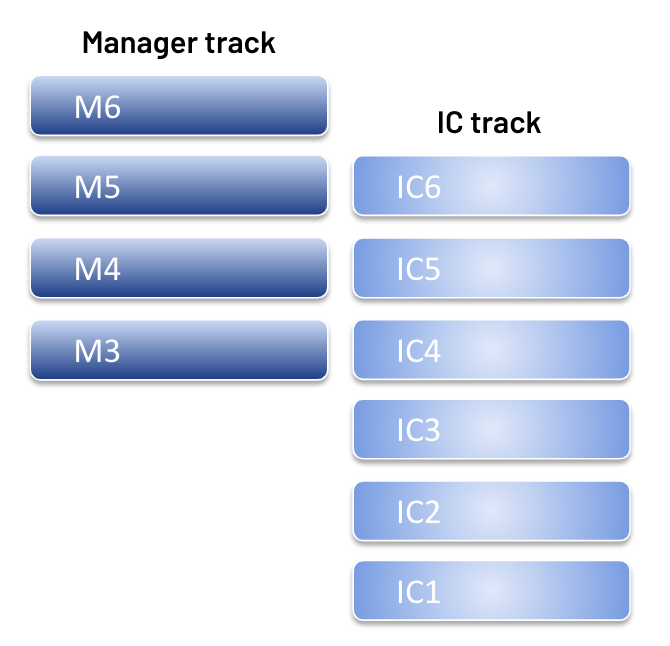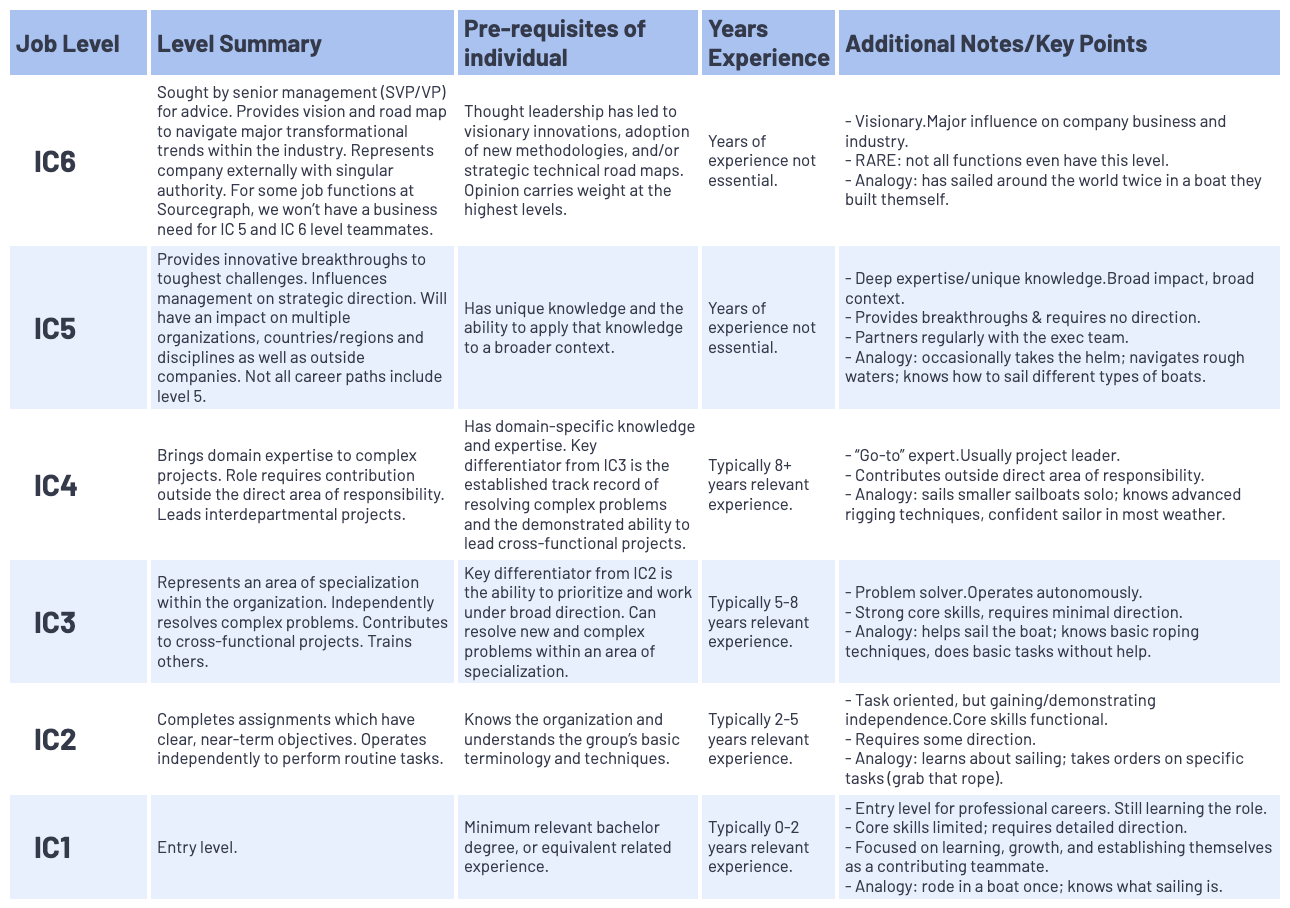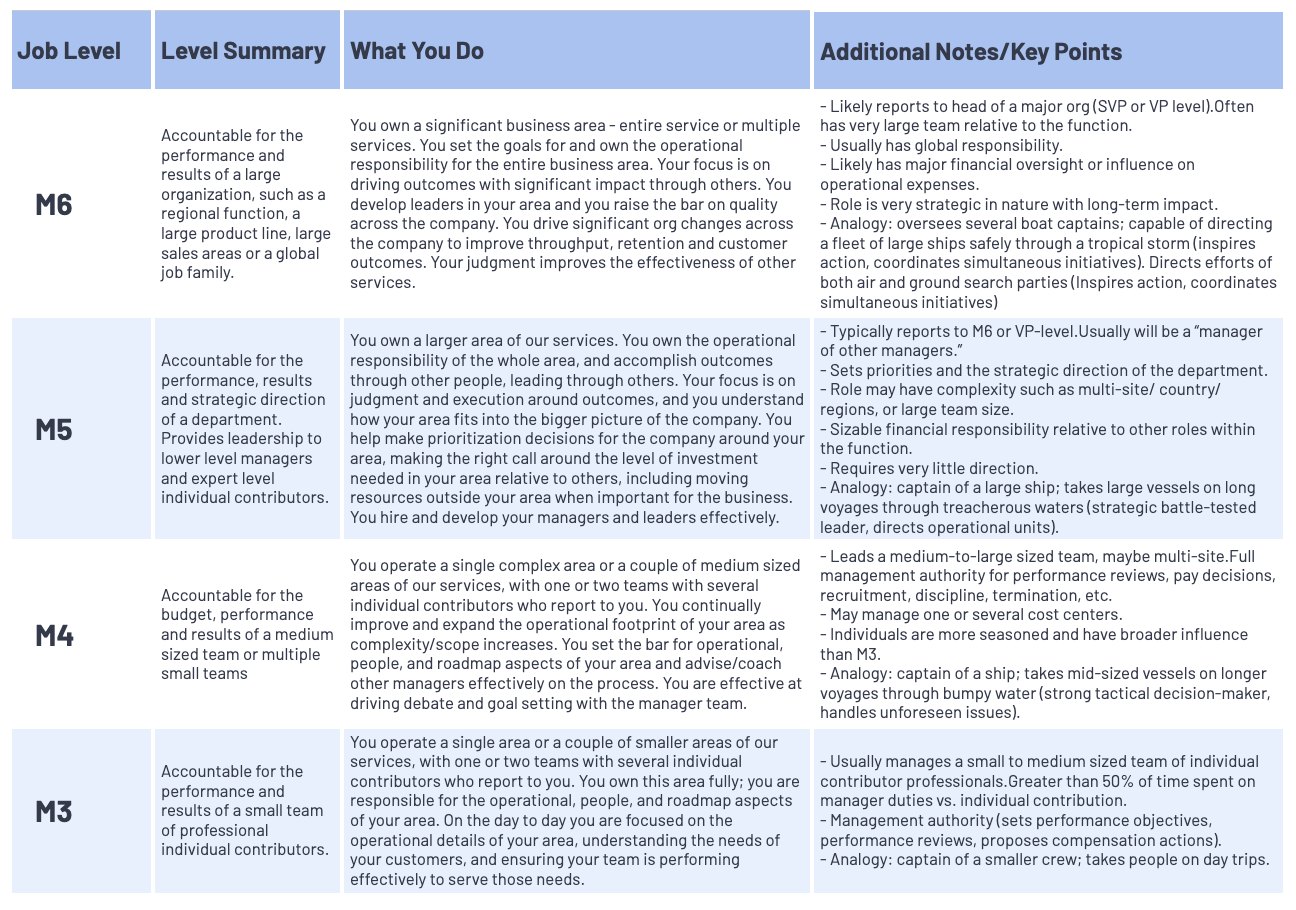
Job levels and compensation bands are the building blocks of a strong compensation strategy. Together, they help ensure pay equity, improve recruiting and retention efforts, and help us build a more transparent company culture.
Job levels, also known as job grades and classifications, help us define the responsibility level and expectations of each role. Each level is defined by impact, seniority, knowledge, skills, and job title, and are associated with a specific pay band. Job levels ultimately help us make more strategic and consistent decisions around how we hire, engage, promote, and retain Teammates.
Levels are used to define career progression for individuals within a role, and are also a tool we use when benchmarking roles against salary survey data. This is how we price jobs and ensure market competitive compensation. We also use levels to discuss career progression and development. For example, we generally expect that an IC4 in one department has about the same level of responsibility and scope as an IC4 in another, in a general sense.
We divide all job families into two tracks:
IC & Manager tracks do not directly map to each other (in other words, an IC6 is not equivalent to a M6).

There are 6-levels in the IC career path - IC1 to IC6:

At Sourcegraph, we use levels M3 to M6:
